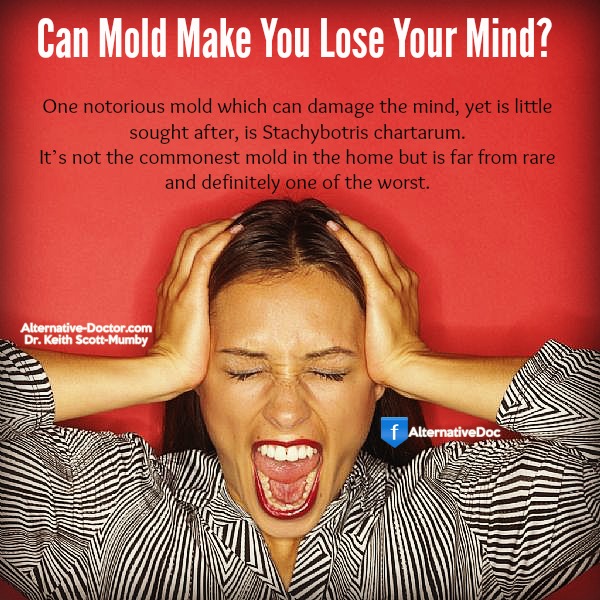Regulars will know about my “I Told ‘Em!” series. It’s almost embarrassing, being 20 – 30 years ahead.
In the early 1980s I had streams of sick patients, many with food allergies, but also with real sensitivities to mold toxins (mycotoxins). It was obvious what was going on. But of course it was all labeled as delusion and fraud because there was “no scientific proof”; the mere fact I got results with my own eyes and own activity doesn’t cut any ice with these guardians of scientific thinking.
Of course with them there would never be any progress; no aircraft, because there was “no scientific proof” that a heavier-than-air machine could fly at the time Orville and Wright took to the air at Kittyhawk. Worse than that: Heavier-than-air craft will never fly! Simon Newcomb, Rear Admiral, US Navy, Professor of Astronomy and Mathematics, US Naval Academy and Director, US Naval Observatory, The Outlook For The Flying Machine denounced the whole idea as folly:
“The demonstration that no possible combination of known substances, known forms of machinery and known forms of force can be united in a practicable machine by which men shall fly long distances through the air, seems to the writer as complete as it is possible for the demonstration of any physical fact to be.”1
Ha ha! There must be some joke connecting “rear admiral” with what comes out of a person’s a**!
Well, in 2004, the retards mob finally caught up with me and others at the leading edge. In 2004 the Institute of Medicine (IOM) found there was sufficient evidence to link indoor exposure to mold with upper respiratory tract symptoms, cough, and wheeze in otherwise healthy people; with asthma symptoms in people with asthma; and with hypersensitivity pneumonitis in individuals susceptible to that immune-mediated condition. 2
The IOM also found limited or suggestive evidence linking indoor mold exposure and respiratory illness in otherwise healthy children. I mean: never mind asking the patients or looking with your own eyes! Just consult the journals and if nobody wrote about it, it doesn’t exist!
In 2009, the World Health Organization issued additional guidance, the WHO Guidelines for Indoor Air Quality: Dampness and Mould. 3
Other recent studies have suggested a potential link of early mold exposure to development of asthma in some children, particularly among children who may be genetically susceptible to asthma development, and that selected interventions that improve housing conditions can reduce morbidity from asthma and respiratory allergies, but more research is needed in this regard. They always hide behind “more research is needed” (meaning, “I ain’t gonna budge on this”). 
According to the US Centers For Disease Control (CDC) website: a common-sense approach should be used for any mold contamination existing inside buildings and homes. The common health concerns from molds include hay fever-like allergic symptoms.
Certain individuals with chronic respiratory disease (chronic obstructive pulmonary disorder, asthma) may experience difficulty breathing.
Individuals with immune suppression may be at increased risk for infection from molds.
If you or your family members have these conditions, a qualified medical clinician should be consulted for diagnosis and treatment. For the most part, one should take routine measures to prevent mold growth in the home.
They say “common-sense approach” but this is surely one of those cases where a medical qualification is a definite impediment to clinical skill and the practice of common-sense!
Doctors should have this top-of-mind always; after all, molds are among the number one pathogens.
Psychoactive Agents
It’s been a long uphill climb to get them to accept that molds can cause respiratory symptoms and allergies.
How tough do you think it’s going to be to get them to accept that molds can cause significant to severe psychological symptoms? Well, don’t hold your breath anyway.
Yet, to me, it’s the most outstanding aspect of mold toxicity that I found in those pioneer years. People would come in with the weirdest symptoms: like sobbing their heart out while laughing and saying, “No, I’m fine. I just can’t stop this crying…”
Other start to lose their concentration and it can be so severe as to become incapacitating—a former office worker of executive simply cannot work any more, due to inability to focus for any length of time, loss of memory and strange, inappropriate moods.
One outstanding patient I had back in the 1980s was a man diagnosed as bipolar. He was very dapper and bright; sort of gentry. But he kept flipping and getting put back on heavy psychotropic drugs. It was me who asked all the right questions and finally uncovered the fact that he went weird pretty well every July. When everyone else was out enjoying the brief UK summer, he was carted off to hospital and put back on drugs.
The fact that he got sick by the calendar was a real giveaway to me: every summer in the UK molds spores peak in the air and one in particular: Cladosporium herbarum, peaks around mid-July (give or take, depending on the moisture-weather).
I tested him for Cladosporium (pre-season), he flipped… case closed. I put him on sublingual desensitization for Clad and he was fine for many a summer. I lost touch eventually, when I moved to Sri Lanka.
Without my help, he would have lost his mind, due to a mold.
The Salem Witches
No-one should doubt that molds can do this. You will probably know the story that the witches of Salem “outbreak”, featured in Samuel Becket’s play The Crucible, was really a big outbreak of Ergot poisoning, from Claviceps pupurea, a mold which grows on rye, which secretes an LSD-like mycotoxin.
It started with young girls, hallucinating and having fits, who went on to make wild accusations, with the encouragement of malicious adults.
The devilish manifestations had nothing to do with Satan, except in the minds of the Puritan leaders, who accused and hanged nineteen poor women, one man died under torture and at least four other women died in custody. All for what? Ignorance and superstition. 
Today we eat far less rye and the chance of this affliction striking again is correspondingly low. Hopefully, if it ever does surface, doctors will be wise enough to recognize what is happening and come forward with testimony to the true origins of the dementia.
But it needs to be kept in mind.
I shudder to think of the vast numbers of people who are diagnosed as psychiatrically deranged, put on heavy drugs and then stay submerged from reality for the rest of their days on Earth. Yet it was a hidden environmental mold, all along. (The drugs become self-perpetuating, so it matters little if the patient later moves to a mold-free home).
Stachybotris
One notorious mold which can damage the mind, yet is little sought after and rarely found, is Stachybotris chartarum (also known as Stachybotrys atra). It’s not the commonest mold in the home but is far from rare and definitely one of the worst.
You’ll recognize it as a greenish-black growth on the walls, especially where there is damp.
In an often-quoted report, individuals exposed to Stachybotris complained of multiple symptoms including headache, sore throat, diarrhea, fatigue, dermatitis, and depression. Upon removal from the environment and remediation of the water damage, these health effects subsided. A medical evaluation of the affected individuals concluded that exposure to toxic trichothecenes, secreted by the mold, was responsible.
If you suspect Stachybotris—and anyone in a house with mold who is feeling a bit odd, never mind sick, should alert you to the possibility—it becomes something of an emergency to get it confirmed and then remedied.
DO NOT shrug your shoulders and figure it doesn’t matter that much. The effects can be permanent and life-changing brain damage.
You could—literally—lose your mind. GET RID OF IT OR GET OUT, that’s my advice!
Other Common Moulds (Molds)
It’s worth getting to know your molds. It’s like bird-twitching: you can recognize a species often at a glance!
- Penicillium Notatum is the bluish-green one, so common on moldy food. This mould is present all year round, however its concentrations reach a peak during winter and spring. This mould is associated with indoor allergy.
- Cladosporium Herbarum – is the most frequently encountered mould in the air. Levels of this mould rise in the spring and peak in late summer and autumn. This is the mould that is frequently found on uncleaned refrigerators, foodstuffs, window frames, straw, houses with poor ventilation and in low damp areas.
- Aspergillus Fumigatus – is found in soils, leaf and plant litter, decaying vegetables and roots, bird droppings, tobacco and stored sweet potatoes. Compared to other moulds, the concentration of spores in the air is relatively low.
- Alternaria Alternata – found in soils, foodstuffs and textiles. Black spots on tomatoes and other foods are attributed to this mould. This is generally considered to be an outside mould and appears when conditions are warm.
- Trichophyton Rubrum and Pityrosporum Orbicculare – are yeasts (Candida-related) that live within the skin in certain types of eczema.
- Botrytis, by the way, is not related to Stachybotris (except in the general sense). It causes what’s known as “noble rot” and is much prized by wine growers… and wine drinkers!

The post Can Stachybotris Mold Make You Lose Your Mind? appeared first on Dr. Keith Scott-Mumby.
